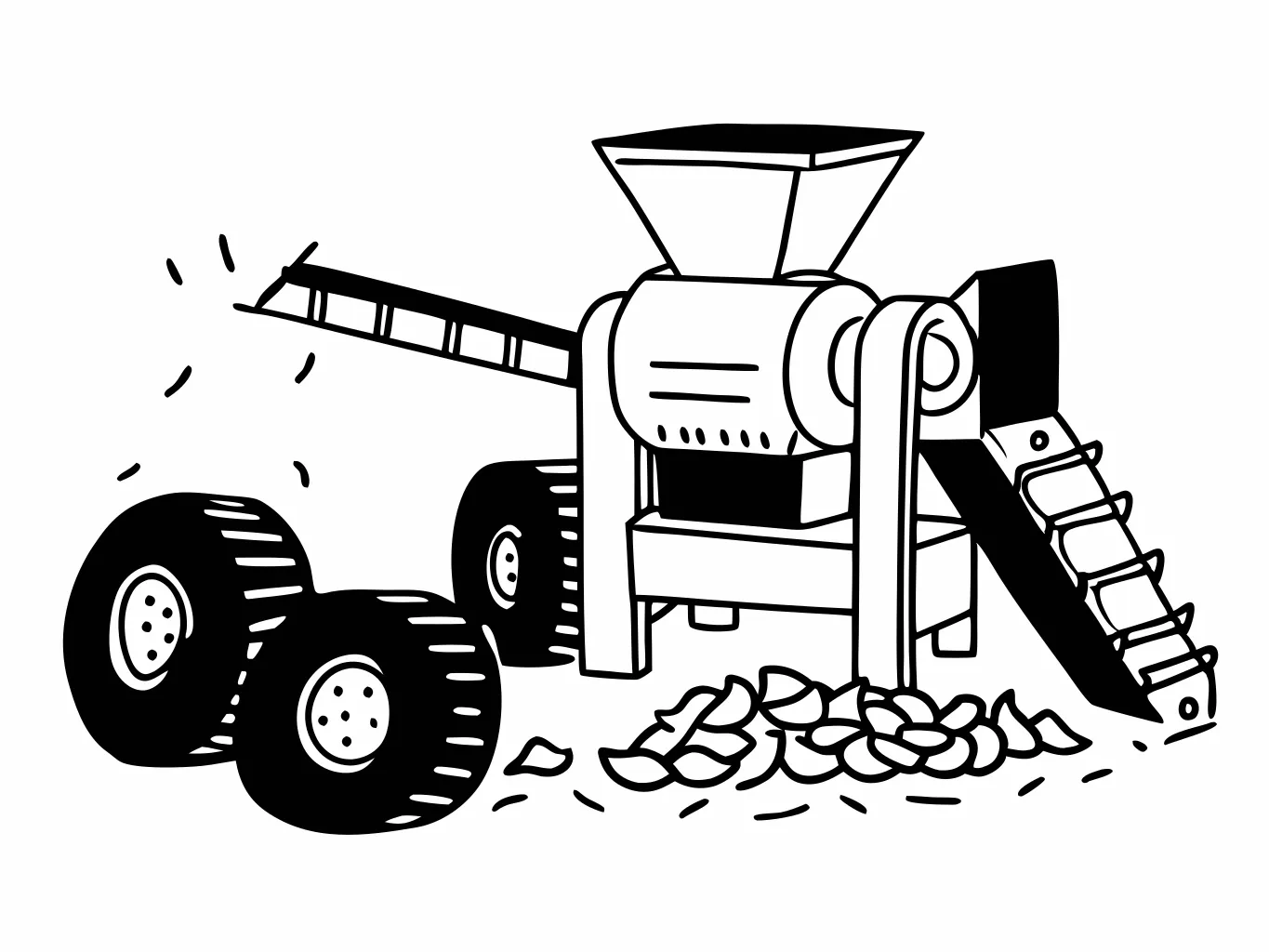What is a Waste Tire Granulator?
A waste tire granulator is a specialized industrial machine designed to recycle scrap tires by breaking them down into smaller, reusable pieces known as rubber granules. These granules, which typically range from 1 mm to 20 mm in size, can be used across a variety of industries. The granulator is a crucial part of tire recycling processes, helping convert bulky waste into valuable resources that can be reused in different applications.
Functionality
The granulator works by shredding tires, removing embedded steel and textile fibers, and grinding the rubber into granules. This process involves multiple stages, including shredding, granulating, and sometimes further refining to meet specific end-use requirements.
Applications
The granulated rubber produced has numerous uses:
- Sports Surfaces: It is used in playgrounds, running tracks, and other sports fields.
- Automotive Parts: Recycled rubber is often molded into new automotive components.
- Construction Materials: Granulated rubber is used for soundproofing, insulation, and as a component in asphalt mixes.
- Landscaping: It serves as mulch or cushioning material for playgrounds.
How Does a Tire Granulator Work?
The tire granulation process typically involves several steps:
- Pre-Cleaning and Sorting: Tires are first cleaned and sorted by size or type to ensure optimal processing.
- Shredding: Whole tires are fed into a primary shredder, reducing them to rubber chips about 50 mm in size, with steel wires in the tire beads being removed in this process.
- Granulation:
- Primary Granulation: The tire chips are fed into the granulator, where they are reduced into smaller rubber granules. During this process, steel is separated magnetically, and textile fibers are sifted out.
- Secondary Granulation: If finer granules are required, the rubber passes through additional refining steps or advanced machines like the Rumtoo Granulator, which can produce sizes as small as 12 mm or less.
- Final Processing: Depending on the intended use, the granules may undergo additional processes like cryogenic grinding for ultra-fine rubber powder or refining for enhanced purity.
Why Use a Tire Granulator?
Environmental Impact
- Reduction of Landfill Waste: Waste tires take up significant landfill space and are not biodegradable. Recycling them into granules helps mitigate environmental pollution and reduces health hazards.
Resource Recovery
- Material Reuse: Tires contain rubber, steel, and fibers that can be recovered and repurposed, reducing the need for new raw materials.
Economic Benefits
- Growth of the Recycling Industry: The demand for recycled rubber has grown, creating jobs and economic opportunities.
- Revenue from Recycled Products: High-quality rubber granules can be sold, providing an economic incentive for tire recycling.
Safety and Compliance
- Environmental Compliance: Proper tire recycling helps companies comply with environmental regulations, improving their corporate social responsibility profile.
Choosing the Right Tire Granulator
To select the right granulator for your needs, consider:
- Capacity Requirements: Determine the volume of tires you need to process to find the best match.
- Output Size: Choose based on the granule size needed for your specific application.
- Material Purity: Some uses demand very pure rubber, which means choosing a machine with effective steel and fiber separation capabilities.
Conclusion
Waste tire granulators are an essential part of the recycling industry, transforming scrap tires into valuable, reusable materials that support both environmental sustainability and economic growth. By investing in tire granulation technology, businesses can help meet global sustainability goals while creating new opportunities in the circular economy.
To learn more about the complete tire recycling process, including shredders and other related equipment, or to explore the financial feasibility of recycling, consider reaching out to our experts.



